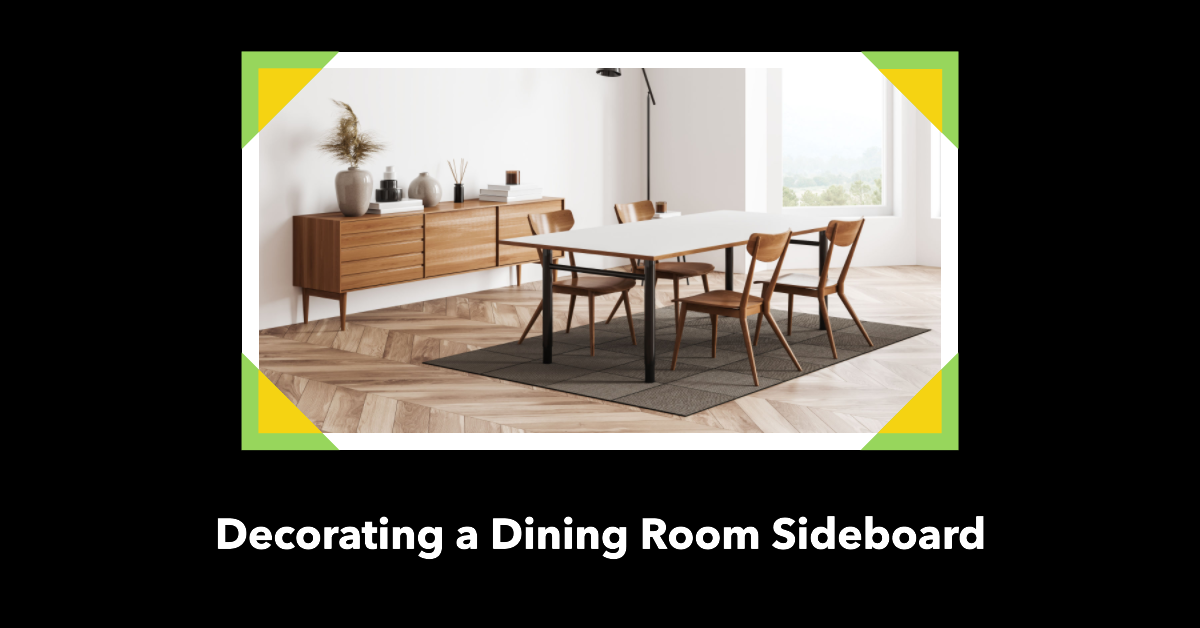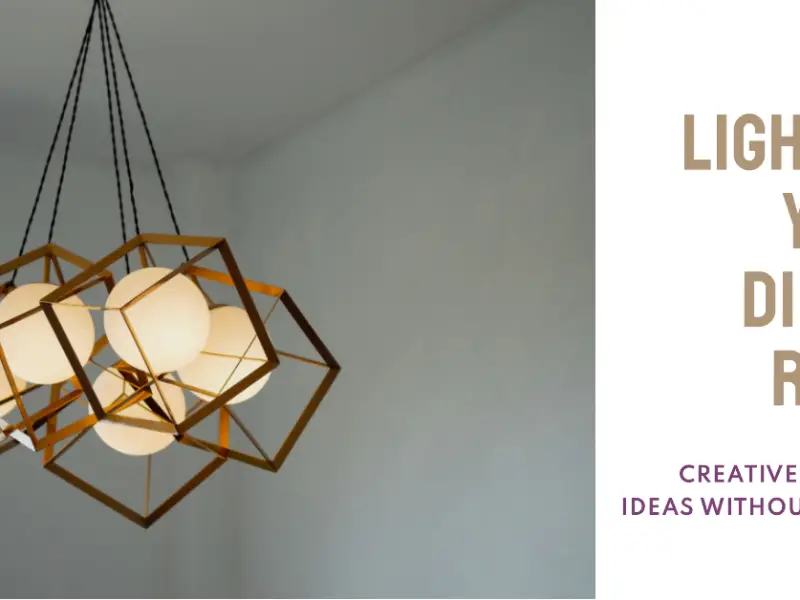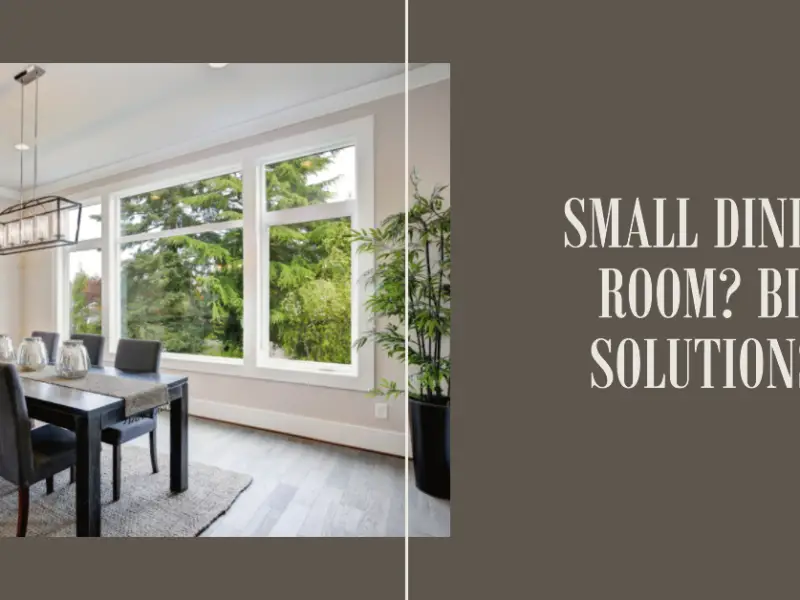I am a well-rounded expert with proficiency in several fields. My experience spans from being a dedicated chef and homemaker. As a passionate homesteader, I’ve honed my skills in sustainable living and animal care, ensuring a holistic approach to everything I undertake. Email me or Txt: (# removed due to spam, please email)
A dining room sideboard is a versatile piece of furniture that can add style, storage, and personality to your dining room.
Decorating your sideboard can be a fun and creative process, but it can also be overwhelming without proper guidance.
In this article, we will provide expert tips on how to decorate a dining room sideboard, including selecting a style, choosing a focal point, layering decorative elements, incorporating lighting and greenery, displaying artwork, playing with height and scale, and adding personal touches.

Determine the Style
Determining the style that you want to achieve is an essential first step in decorating your dining room sideboard. By identifying the style that you want to achieve, you can create a cohesive and visually appealing look in your dining room.
One way to determine the style that you want to achieve is to look for inspiration in design magazines, online sources, or your own personal style.
Pay attention to the colors, textures, and materials that you are drawn to, and consider how these elements can be incorporated into your dining room sideboard.
Some common styles to consider include traditional, modern, rustic, or eclectic.
Traditional styles often feature classic and elegant elements, such as ornate detailing and rich wood finishes.
Modern styles are characterized by clean lines and minimalism, with a focus on sleek and contemporary designs.
Rustic styles often feature natural materials and textures, such as wood and stone, and incorporate elements of the outdoors.
Eclectic styles are a mix of different design elements and styles, and can be personalized to reflect your unique taste and personality.
Once you have identified the style that you want to achieve, you can begin selecting décor and accessories that fit within that style.

Select the Focal Point
Selecting a focal point is a crucial aspect of decorating your dining room sideboard. It can be a large piece of art, a decorative object, or a collection of smaller items that draw the eye and serve as the main focus of your sideboard.
When selecting a focal point, consider the style and color scheme of your dining room. Choose an item or collection of items that complements the overall style of your dining room and fits within the color palette.
If your dining room is more traditional, consider a classic painting or ornate decorative object. For a more modern or eclectic dining room, consider a unique sculpture or abstract art piece.
Once you have selected your focal point, you can begin to build your décor around it. Arrange complementary items around your focal point, such as candles, vases, or decorative bowls.
Use different heights and textures to create visual interest and balance. Consider incorporating items that reflect the season or a particular holiday to add a personal touch.

Layer Decorative Elements
Layering decorative elements is a great way to add depth and interest to your dining room sideboard. By combining items of varying heights, textures, and colors, you can create a visually appealing display that reflects your personal style.
To start, consider adding a large centerpiece item, such as a vase or sculpture, as the main focal point of your sideboard.
Next, add additional items around the centerpiece to create layers. For example, you can place a stack of books on one side and a decorative bowl on the other.
Then, add smaller items in front of the larger ones to create depth and balance.
To add texture, consider using items such as woven baskets or textured pottery. You can also use different materials, such as wood or metal, to add contrast and interest.
Be sure to balance the weight and color of each item to create a cohesive look. For example, if you have a heavy vase on one side, add a smaller item of similar weight on the other side to balance it out.
When layering decorative elements, less is often more. Avoid cluttering your sideboard with too many items, as this can detract from the overall look. Instead, focus on carefully selecting a few key pieces that complement each other and enhance the style of your dining room.

Use Lighting to Highlight Décor
Using lighting to highlight your decorative elements is a great way to add warmth and ambiance to your dining room.
There are many different lighting options that you can use to enhance your sideboard décor, depending on your style and preferences.
One option is to use table lamps on your sideboard. Table lamps provide a soft, warm glow that can highlight your decorative items and create a cozy atmosphere in your dining room.
Choose lamps that complement the style of your sideboard and coordinate with your overall decor.
Candles are another great lighting option for your sideboard. They can add a romantic, intimate feel to your dining room and create a sense of warmth and coziness.
You can use candle holders of different sizes and shapes to add interest and texture to your sideboard.
Another option is to use decorative lighting fixtures, such as pendant lights or chandeliers. These fixtures can provide a dramatic and stylish statement in your dining room and help tie your sideboard décor together with the rest of the room.
No matter which lighting option you choose, be sure to use bulbs with warm tones to create a cozy and inviting ambiance.
You can also experiment with different heights and placements of your lighting to create the perfect balance of light and shadow for your sideboard décor.

Incorporate Greenery
Introducing greenery to your dining room sideboard can bring a sense of freshness and nature to your decor.
Adding plants or flowers in decorative vases or pots can create a beautiful and inviting display. It’s important to choose plants that are easy to care for and complement your personal style.
You can also consider using artificial plants or flowers to achieve a similar effect without the need for regular maintenance.
This option is especially beneficial if you lack the time or the natural light necessary to keep live plants healthy.
With the right choice of greenery, you can transform your dining room sideboard into a beautiful and calming focal point.

Display Artwork
Adding artwork to your dining room sideboard can elevate the overall aesthetic of the space. When choosing artwork, consider the size and scale of your sideboard, as well as the style and color scheme of your dining room.
A large statement piece can serve as the focal point of your sideboard, while smaller pieces can be arranged in a gallery-style display.
In addition to traditional artwork, consider adding other decorative items such as mirrors, woven tapestries, or sculptural objects to create visual interest.
Mixing and matching different textures and materials can add depth and dimension to your display.
If you have a collection of artwork, try grouping them together on your sideboard for a cohesive look.
Alternatively, you can choose artwork that complements the focal point of your sideboard, such as a landscape painting or photograph if your focal point is a vase of fresh flowers.

Play with Height and Scale
By mixing different heights and sizes of decorative elements, you can create a visually appealing display on your dining room sideboard.
This can include adding tall items such as vases, candlesticks or sculptures, and balancing them with smaller items such as decorative bowls or picture frames.
Varying the heights and weights of each item will create a sense of depth and dimension to your display.
For instance, you can place a tall vase on one end of the sideboard and a stack of books or a decorative tray on the other end. To add even more interest, you can also play with asymmetry and off-center placement.

Add Personal Touches
Adding personal touches to your dining room sideboard can give it a unique and personalized touch. Consider incorporating items that hold sentimental value or reflect your personal interests and hobbies.
This can include family photos in decorative frames, collections of unique items such as antique silverware or vintage glassware, or even displaying your favorite books or artwork.
Personal touches can also include adding seasonal decor such as holiday decorations, seasonal flowers or foliage, or seasonal table settings.
This can add a festive and welcoming touch to your dining room and create a sense of warmth and coziness.
Remember to balance personal items with other decorative elements to create a cohesive and stylish look.
Consider grouping personal items together to create a focal point, or scatter them throughout the sideboard to add a personal touch to different areas.

Create Cohesion with the Room
By considering the overall look and feel of your dining room, you can ensure that your sideboard decorations complement the space rather than clash with it.
Use the colors, patterns, and textures from other elements in the room as inspiration for your sideboard décor choices.
For example, if your dining room has a rustic theme with earthy tones, consider adding natural elements like wooden vases or woven baskets to your sideboard.
Additionally, choose décor items that match the style and era of your furniture, whether it’s traditional or modern.
By creating a cohesive look, your sideboard decorations will contribute to the overall ambiance of the room.

Conclusion
Decorating your dining room sideboard can be a fun and creative process that adds style and personality to your space.
By following these expert tips and ideas, you can select a style, choose a focal point, layer decorative elements, incorporate lighting and greenery, display artwork, play with height and scale, add personal touches, and create cohesion with the rest of the room.



